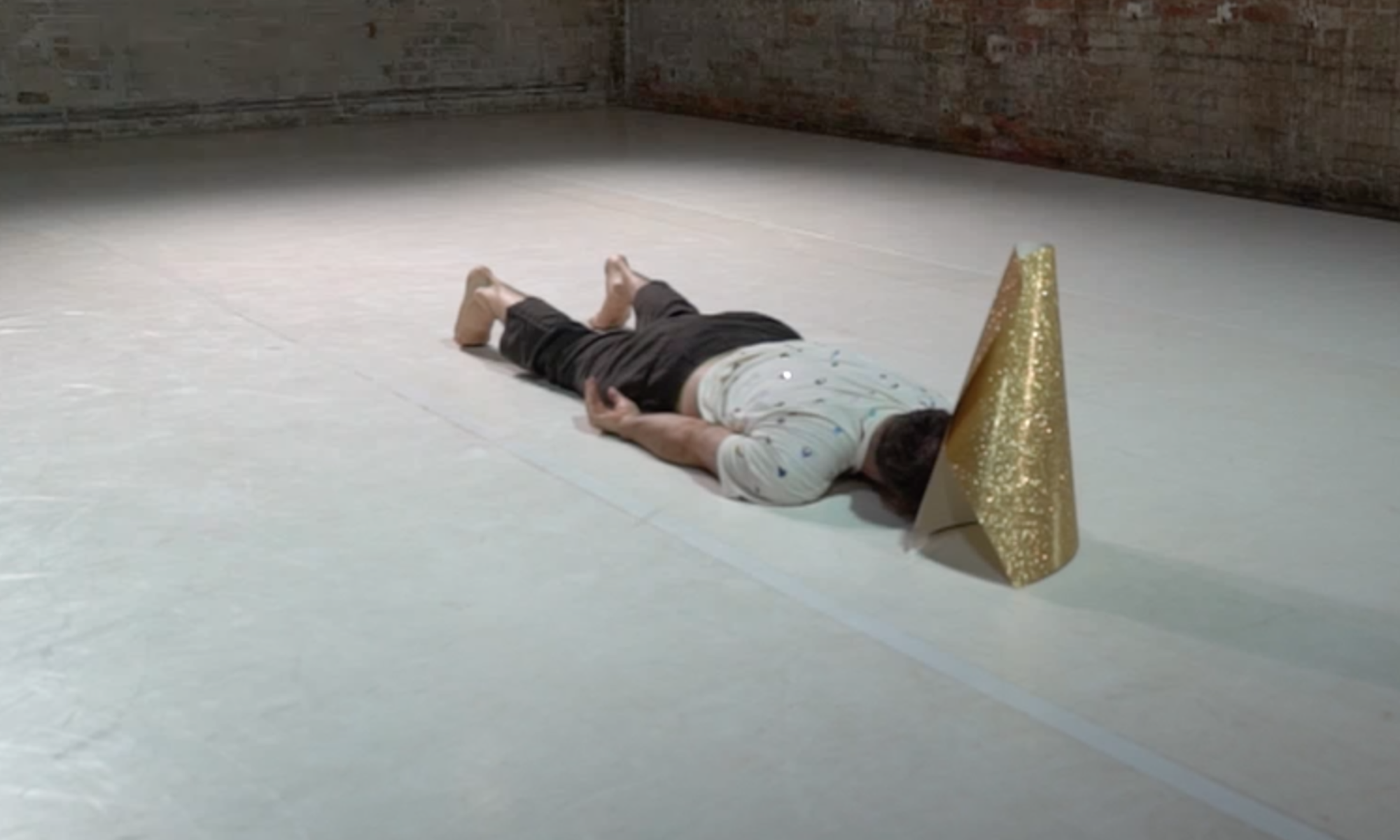On Orientations | one place after
An Kaler
24.2.2013
Studio 5 Uferstudios, Berlin
A little Q & A –
Why were there the evenly space strings attached to the floor upstage and the ceiling downstage? To create an upward trajectory from upstage to downstage for the eye, maybe. The angle of the strings relative to the front of the stage also creates a sense of movement.
Why to horizontal fluorescent tubes upstage? Maybe to emphasis low upstage horizontality, a strong theme in the piece. A Flavin reference, maybe. Or are fluorescent tubes are just the current electromagnetic trend?
Why wear pants that are the same color and tone as the floor? An attempt to make the legs blend in with the floor to negate verticality, perhaps.
***
The idea of this piece and the concept of the series – to explore “different notions of orientation” is one I enjoy. I have often wondered about dance terminology (at least in English) in relation to the human form in space. The term floor work, for example. Floor work tends to be when the body is not vertical and the pelvis is close to or on the floor. But unless the dancer is levitating all dancing is floor work. Except for jumping. But it’s impossible to jump and land without the floor. So maybe everything is floor work except for what happens in the air.
I also appreciate that the performer never came to standing. What percentage of dances consist of vertical or mostly vertical dancers? 90%? 95%? Probably more. What I found disappointing was the lack of interrogation of what the body can do in a primarily horizontal position. She didn’t explore the body itself and how it moves through its kinesphere and through space enough to challenge the idea of verticality. Maybe this is what the phrase in the program “…conceiving of stillness as motion/emotion.” was referring to. But then, here again, the performer wasn’t still enough long enough to generate an emotion in me. Attempting something that is normally seen vertically in the horizontal plane would have more strongly challenge the normative spatial orientation of verticality. This, though, might come across as too “compare and contrast” and not poetic/artistic enough.
One statement in the program I am curious about – “Linking spatiality with temporality On Orientations | one place after…” This piece can’t link two things that are already linked. Space and time are inexorably linked. Maybe that statement is meant to indicate a problematizing of the space-time relationship. This I did not see. The stretches of stillness and the low verticality might have been Kaler’s attempt to question the space-time relationship. Since space and time are linked, questioning one means the other is being questioned. But the stretches of stillness in the Berlin dance scene are standard. Unlinking space and time would be something to see!
Granted it has been almost a year since I saw Kaler’s trio at Uferstudios
last summer and a while since I saw this solo, but I think both pieces have a very similar spatial trajectory. Both pieces started downstage left, curved upstage to stage right, came downstage, back upstage and then moved towards center stage. Is this an intentional choreographic decision to create a spatial theme for several pieces? Is this a somatic spatial response to performing front of an audience? I prefer the former to the latter. I didn’t see the third piece in the series so didn’t get that data to help me understand Kaler’s spatial proclivities. I wish I had been able to see it.

